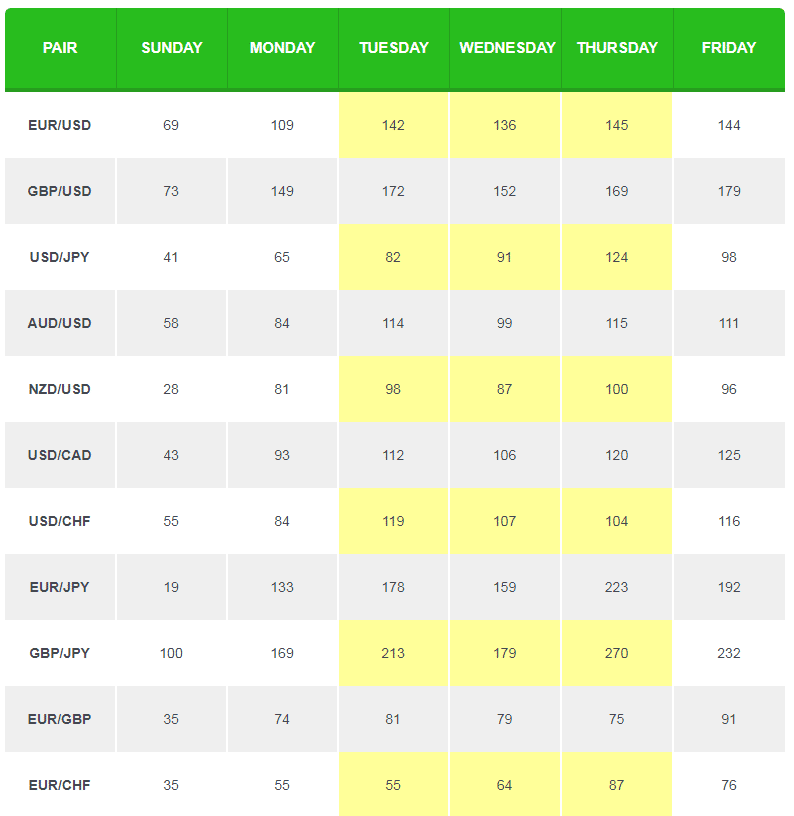
Forex trading can be confusing for beginners. It is worth signing up to a demo account and learning more from Rayner's YouTube channel. Then, you can begin to learn about the basics of leverage and how to use a trading platform. This article will explain how to open a demo account, and the basics of leverage.
Signing up for a demo account
A demo account is a good idea for forex trading. A demo account is a way to test your trading skills and make virtual profits before opening a real account. It is crucial to practice new trading strategies before you begin investing real money. Demo accounts are a good way to learn how to use the system and identify any obstacles you might face in trading.

Rayner Teo's YouTube channel provides information and inspiration
Beginners in Forex trading should begin by understanding the terminology and indicators. You can also visit Investopedia to learn more about trading. These websites also feature videos about trading concepts. You can learn more about forex by following a Forex trader’s YouTube channel.
Use a trading platform
There are many aspects to consider when choosing a trading system. The trading terminal allows you to set up automatic stop limits and guarantee stop losses. A few trading platforms have a trailing stopping feature that adjusts your stop limit when the price changes. This keeps your profits locked in and minimizes losses. Trades can be made more successful by using advanced indicators such as the renko charts.
Leverage
Forex traders have the ability to leverage high amounts of capital to increase their profits. Leverage can increase your profit potential by up to five hundredfold the initial capital. Forex brokers often offer free trading. You should know the commission if you trade in currency futures. Leverage in futures trading tends to be lower than in forex. Forex trading leverage is expressed as a percentage.
Points in Percentage
In foreign exchange trading, there are two units of measurement: points in percentage and point. Points are the smallest increment for currency price changes and they represent 0.0001 of percent. This would mean that in most currency pairs this would be one tenth to a point. If you do this, your currency pair would be worth one hundred pips. The difference in the value of a Canadian Dollar and a US dollar is one percentage point, or 0.0001.

Currency pairs
To trade one currency with another, you can use currency pairs. The price for one currency pair is calculated by taking the exchange rate of the base currency and converting it into the amount of the quoted currency. If the EUR/USD price changes from $1.12925-1.12935, one pip is transferred. Technically, you can trade any currency around the globe, but you will only be able to trade the currencies offered by your Forex broker.
FAQ
How are Share Prices Set?
The share price is set by investors who are looking for a return on investment. They want to make money with the company. So they purchase shares at a set price. If the share price goes up, then the investor makes more profit. If the share price falls, then the investor loses money.
An investor's primary goal is to make money. This is why they invest into companies. It allows them to make a lot.
What is a Mutual Fund?
Mutual funds are pools or money that is invested in securities. Mutual funds provide diversification, so all types of investments can be represented in the pool. This helps reduce risk.
Professional managers oversee the investment decisions of mutual funds. Some funds also allow investors to manage their own portfolios.
Mutual funds are preferable to individual stocks for their simplicity and lower risk.
How does inflation affect the stock market
Inflation is a factor that affects the stock market. Investors need to pay less annually for goods and services. As prices rise, stocks fall. That's why you should always buy shares when they're cheap.
What is a bond?
A bond agreement is a contract between two parties that allows money to be transferred for goods or services. It is also known simply as a contract.
A bond is typically written on paper and signed between the parties. This document contains information such as date, amount owed and interest rate.
The bond is used for risks such as the possibility of a business failing or someone breaking a promise.
Sometimes bonds can be used with other types loans like mortgages. This means that the borrower must pay back the loan plus any interest payments.
Bonds are also used to raise money for big projects like building roads, bridges, and hospitals.
A bond becomes due upon maturity. The bond owner is entitled to the principal plus any interest.
Lenders can lose their money if they fail to pay back a bond.
Who can trade in stock markets?
Everyone. However, not everyone is equal in this world. Some people are more skilled and knowledgeable than others. So they should be rewarded for their efforts.
But other factors determine whether someone succeeds or fails in trading stocks. For example, if you don't know how to read financial reports, you won't be able to make any decisions based on them.
These reports are not for you unless you know how to interpret them. Understanding the significance of each number is essential. You should be able understand and interpret each number correctly.
Doing this will help you spot patterns and trends in the data. This will assist you in deciding when to buy or sell shares.
And if you're lucky enough, you might become rich from doing this.
How does the stock market work?
You are purchasing ownership rights to a portion of the company when you purchase a share of stock. The company has some rights that a shareholder can exercise. He/she is able to vote on major policy and resolutions. He/she has the right to demand payment for any damages done by the company. He/she also has the right to sue the company for breaching a contract.
A company cannot issue shares that are greater than its total assets minus its liabilities. It's called 'capital adequacy.'
A company with a high capital adequacy ratio is considered safe. Low ratios can be risky investments.
Statistics
- Our focus on Main Street investors reflects the fact that American households own $38 trillion worth of equities, more than 59 percent of the U.S. equity market either directly or indirectly through mutual funds, retirement accounts, and other investments. (sec.gov)
- Individuals with very limited financial experience are either terrified by horror stories of average investors losing 50% of their portfolio value or are beguiled by "hot tips" that bear the promise of huge rewards but seldom pay off. (investopedia.com)
- For instance, an individual or entity that owns 100,000 shares of a company with one million outstanding shares would have a 10% ownership stake. (investopedia.com)
- Even if you find talent for trading stocks, allocating more than 10% of your portfolio to an individual stock can expose your savings to too much volatility. (nerdwallet.com)
External Links
How To
How to Invest Online in Stock Market
The stock market is one way you can make money investing in stocks. There are many methods to invest in stocks. These include mutual funds or exchange-traded fund (ETFs), hedge money, and others. Your investment strategy will depend on your financial goals, risk tolerance, investment style, knowledge of the market, and overall market knowledge.
To become successful in the stock market, you must first understand how the market works. This involves understanding the various types of investments, their risks, and the potential rewards. Once you know what you want out of your investment portfolio, then you can start looking at which type of investment would work best for you.
There are three main types of investments: equity and fixed income. Equity refers a company's ownership shares. Fixed income refers to debt instruments such as bonds and treasury notes. Alternatives include things like commodities, currencies, real estate, private equity, and venture capital. Each category comes with its own pros, and you have to choose which one you like best.
Once you have determined the type and amount of investment you are looking for, there are two basic strategies you can choose from. One strategy is called "buy-and-hold." You purchase a portion of the security and don't let go until you die or retire. The second strategy is called "diversification." Diversification involves buying several securities from different classes. For example, if you bought 10% of Apple, Microsoft, and General Motors, you would diversify into three industries. Multiple investments give you more exposure in different areas of the economy. Because you own another asset in another sector, it helps to protect against losses in that sector.
Another key factor when choosing an investment is risk management. Risk management is a way to manage the volatility in your portfolio. You could choose a low risk fund if you're willing to take on only 1% of the risk. On the other hand, if you were willing to accept a 5% risk, you could choose a higher-risk fund.
Learn how to manage money to be a successful investor. Planning for the future is key to managing your money. A plan should address your short-term and medium-term goals. It also needs to include retirement planning. This plan should be adhered to! Don't get distracted with market fluctuations. Your wealth will grow if you stick to your plan.